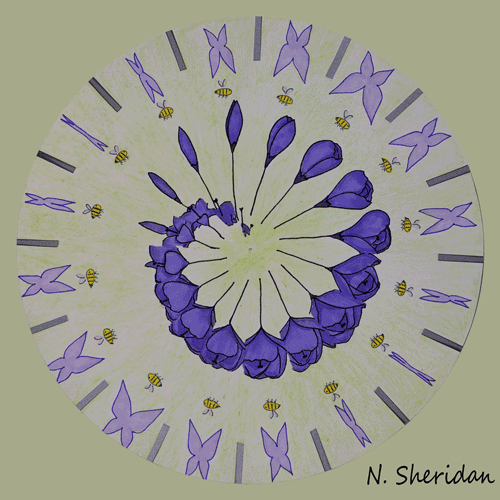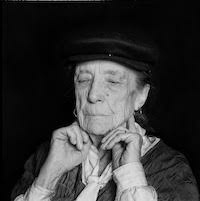Conceptual
Introduction
The projects given during the Conceptual unit are used as stepping stones to help build the students skill in unique forms of expression and develop technical skills. Students are encouraged to express their thoughts and ideas in creative ways that they may never had done before. Students are also introduced to the programs and softwares they will end up using during their time at Freestyle and beyond.
So far, being at freestyle has taught me that there are many ways to communicate and that is possible to convey what you want to say even in unusual means. I have never been given so much creative freedom, but at the same time so many creative challenges, such as only being able to use a photo and haiku to express my thoughts. Everyday has been a joy as a learn how to use programs that will help me survive in the digital age. As a Freestyle student I have experienced and will continue to experience new opportunities that could not have come from anywhere else.
Haiku
For our first big project we were tasked with making a photo haiku. The photo haiku involved many parts, the first was to write a haiku that followed a prompt and the structure of 5 syllables, 7 syllables, 5 syllables and a kigo, a indication of season. I was given the prompt “write a haiku that explores the feeling of pity though gift giving”. The second part was to take a photo that matched the feeling of the haiku. Both of these parts were done in English class. After that we started focusing on learning to use audio and video elements to enhance our haiku in Digital Media class. During this period, we were tasked with making transitions for the title and subtitles, along with enhancing audio and adding music.
What I valued most about the haiku project was that it was a good introduction to the skills we would need to learn and use for the rest of the year. It limited what I could do because of the prompt and short length, but this allowed me to thrive as it made it easier to find places of creativity. This brings me to the second thing I learned from the haiku project, creating. This set the tone of what the rest of my time at freestyle would be like. While you would learn tools to help you and how to analyze things during class, it was up to you yourself to create a piece yourself.

Why Art?
The “Why Art” project was a project given in English to explore the different perspectives on why art matters. For this project our class read multiple articles that explored why different people believe art matters. We where then encouraged to formulate our own opinions on the significance of art and justify our view using and artist we researched on our own. For our project outcome, we were to write an essay and give a presentation to utilize two different mediums of communication our position.
If you would like to listen to my essay audibly, use the link here
For my presentation, I had to include the arguments that I wrote in my essay and present them though a 5 minute presentation. I had to introduce my article, artist, and 3 pieces of their artwork. We were told to not use to much writing and to use most of the space though images.
Overall, the Why Art project was meaningful as it was my first major project ant freestyle. It encouraged me to think creatively and to explore what the world of art means on my own, but under to protection of my mentors. It was very collaborative as you would give feedback to other people’s drafts, and it was nice to see everyone else’s presentations.
Photoshop Blend Modes
The goal of this project was to learn how to blend and edit the lighting of photos by learning the different properties of the special layers, multiply, screen, and overlay.
What are your thoughts about using Photoshop Blend Modes?
I think the learning about the blend modes is very help for editing photos and will be a great tool for me to use in the future.
What did you value about learning Photoshop Blend Modes?
I valued that the explanations about how to use blend modes were very clear and helpful for understanding. They will be very helpful in editing photos where I did not choose the right balance of ISO, shutter speed, and aperture, so the lighting was not right, They are also very help in creating shadows and highlights in digital art pieces.
Animation
So far, as an Animation student I have learned about the history of animation and the principles of motion behind it. We have started off doing old-school physical animations, but using technology to be able to share them with everyone. I like being an animation student because it allows me to create motions and video scenes, but be able to customize them to my liking in the creation, not just editing.
Zoetrope
Invented in 1834 the zoetrope gave a new 3D look to animation in contrast to the 2D look of the phenakistoscope. For may zoetrope, I animated a duck diving into a pond. I used a light board to be able to visualize and trace the previous frame, but due to it being my first time animating, it isn’t the smoothest and very heavily relied on copying the frames from a real video of a duck, that didn’t translate to animation the best as I had a lot less frames and a much shorter time frame.
Phenakistoscope


The phenakistoscope can be argued as the first invention that produced animations. It is a disk you hold up to the mirror and spin. You view the animation on the mirror though cut out slips, which gives you the animation effect. Here I have digitized it so that you get the same effect. For my phenakistoscope I drew the birth and death of a flower in a cycle. I based the flower off of the crocus flower and added a butterfly and bee to add more motion to the piece. The animation had interesting limitations in that the triangular frames encouraged a unique use of space.
Flipbook
The flipbook is one of the most traditionally know art forms of animation that involves hand drawing frames. We were tasked with making two flipbooks, one 90 frames and another 70 that would transition to the animation of another person in the class. For my first flipbook I yet again drew inspiration though a bird and animated one of those “videos for cats” that involves just setting down bird seed and seeing the birds come. As this was my first long animation, I did not anticipate how much coloring in the frames with colored pencil would be so time consuming and often had to redo frames to get the timing of the birds movements to be realistic, though I will admit the last scene of the bird taking flight does look unusual. For my class animation I thought that the shape reminded me fish, so I decided to make a pond of koi fish.
Stop Motion Paper
The goal of this project was to create an animation using paper. I had a bit more of a struggle for finding inspiration, but I recently watch an episode of Moomin and kind of wanted to do something that involved Snufkin’s big hat. It kind of reminded me of a shepherd, so I decided to do a story of some sheep going on a journey and mostly let my mind make this project up in the moment. I had a lot of fun, though it was hard to move all the individual moving parts.
Stop Motion Object
For the stop motion animation project, we were tasked with bringing in objects or using the materials we had around class to make a 3D stop motion animation. I decided to bring in some shells and rocks into class, then decided to combine it with some playdough that was provided in class. I kind of wanted to have multiple sea creatures, but I hand a hard time deciding how they should interact. I eventually settled on having my biggest clam shell eat the creatures and created a plot line to get to it.










